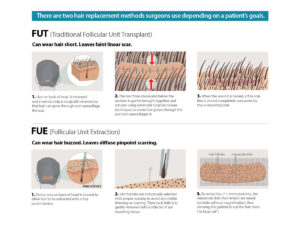Overcoming Hair Loss With Hair Transplantation
As you age, your hair tends to go through many changes. It may turn grey, become thinner, or may even fall out. If the rate of your hair loss starts to exceed the rate of your hair growth, this can result in baldness. Hair loss problems are getting very common due to the hectic lifestyle most of us are leading.
Hair loss has made many men and women feel insecure and may even lose their confidence as they become more self-conscious. Fortunately, there are ways we can go about treating and overcoming baldness. One of the more effective ways to treat and overcome baldness is going through hair transplant surgery.
What Is Hair Transplant?
Hair plugs, or a hair transplant, is a surgical procedure that entails moving healthy hairs from a thicker patch of hair on your scalp, which is referred to as a donor site, to the area that is balding. Multiple hair plug sessions may be required, depending on the severity of your baldness. It also depends on the thickness and color of your hair.
Types Of Hair Transplant Methods
There are a few different methods used for hair plugs. These methods differ on the shape and size of the hair graft from the donor site.

hair transplant method
Micro-grafts – Using this technique, only one or two hairs are transplanted at a time. A patient can have up to 700 hairs transplanted to the balding area during each session.
Mini-grafts – With this method, two to four hairs are transplanted at a time.
Slit grafts – For a slit graft, the doctor will create an incision into the patient’s scalp, and the graft is placed in that slit. Usually, 4 to 10 hairs are transplanted with these grafts.
Punch grafts – These grafts are round in shape and generally contain 10 to 15 hairs.
Strip grafts – These types of grafts are typically thin and long and are more rectangular in nature. Usually, forty to fifty plugs are transplanted to the recipient site per session.
Before A Hair Transplant Procedure
Before undergoing the hair transplant surgery, your doctor will certainly schedule an appointment for you to go to his hair surgery facility so he may run through with you about the procedure. Your doctor will show you some images of what you would look like after the hair transplant. He or she will give you advice and guidelines to follow prior to your hair surgery.

The common guidelines will be to refrain from smoking & drinking as well as avoid certain medications before the surgery. It will not safe to drive your own vehicle after the hair transplant procedure so it is important that you arrange for transport to bring you home.
During The Hair Transplant Procedure
Your hair on the donor site will be shaved or trimmed short in order to make it easier for the doctor to remove the grafts. Your scalp will be thoroughly cleaned and then the doctor will put you under local anesthesia to numb the donor site before he or she removes a small graft of hair from it, using a scalpel. Thereafter, the donor site will be closed with a few stitches.
Your hair surgery doctor will then separate the graft into smaller sections. Small holes will be made in your balding area and the hairs will be inserted into these holes. Once the transplant is completed, the doctor will clean your scalp and cover it with gauze. A pressure bandage may be placed on it and you are required to wear it for a few days.
After the procedure, you will be given anti-inflammatory medication, along with antibiotics and some pain medication to be taken during the healing period. It is strongly recommended to refrain from engaging in any strenuous activities, sports, and vigorous exercise for up to about ten days.
Risks Associated With Hair Transplant Procedure
Although hair transplantation procedure is low-risk but with any type of surgery, there will always be some risks. The common effect or risks that patients experience are infection, wide scars, or excessive bleeding.
Overall, hair transplants are relatively safe and have minimal risk. It offers great benefits and has visible lasting natural results for most patients that undergone the procedure. Hair transplants not only restore the patients’ hair, but they also restore their self-confidence and boost their self-esteem.
